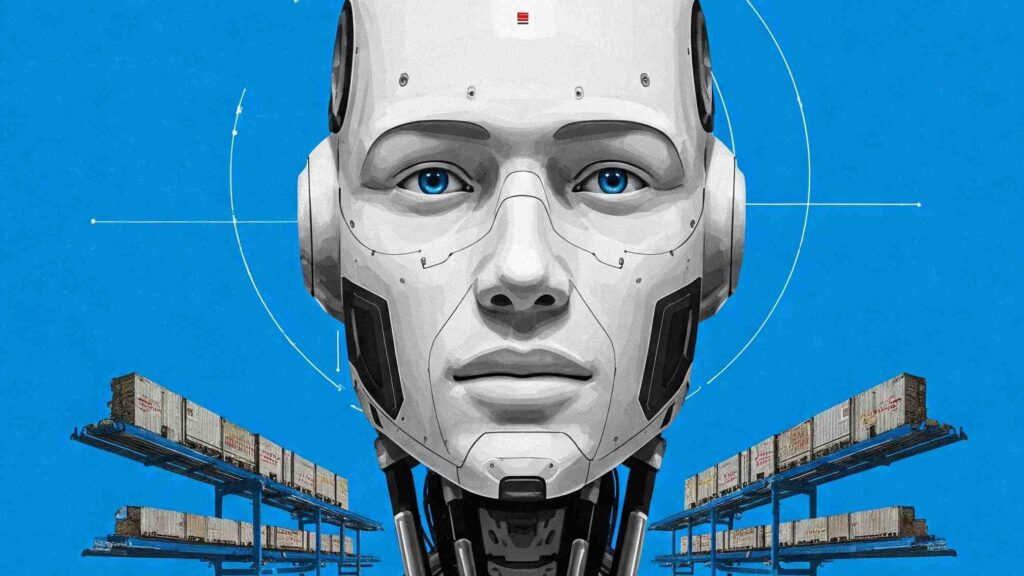What is Business Automation?

In today’s dynamic business environment, what is business automation is a question many entrepreneurs and leaders ask. They ask this question when looking for ways to stay efficient and competitive. Automation is about the use of technologies to execute tasks and processes with minimal human involvement. It ranges from startups managing client inquiries to global corporations handling supply chains. And automation is changing how companies operate. It’s about leveraging tools to:
- Streamline workflows
- Reduce repetitive manual work
- Boost overall productivity
The purpose of automation is to make business operations smoother and more cost-effective. For example, automating tasks like scheduling social media posts or processing payroll, eliminates human error and frees up time for strategic planning.
Automation isn’t limited to large companies. Small organizations can use email marketing platforms to maintain customer relations without constant oversight. The benefits are significant: faster processes, fewer mistakes, and better resource allocation. By adopting business automatisierung, companies can focus on innovation and growth. At the same time, the routine tasks run seamlessly in the background.
In our article, we will dive deeper into the world of automation. We will explore its importance, types, tools, challenges, and future trends. Whether you're new to the concept or looking to enhance your existing systems, understanding automation technologies is key to thriving in a fast-paced, tech-driven world.
The Importance of Business Automation in Modern Enterprises
In an era defined by rapid tech advancements, why automation is important in business is more relevant than ever. Automation has become a cornerstone for organizations striving to be competitive in a global arena. It enables businesses to:
- Manage increasing complexity
- Scale operations efficiently
- Deliver consistent results
Without automation, organizations risk falling behind competitors who leverage technologies to optimize their processes.
One of the primary ways automation and business intersect is through cost reduction. Companies can automate repetitive tasks like data entry or inventory tracking. This way, they lower labor costs and cut errors that lead to financial losses. For instance, a retail chain using automated stock management avoids overstocking. It saves thousands annually. Automation also enhances decision-making. Real-time data from automated systems allows leaders to spot trends and act quickly, whether it's adjusting pricing or reallocating resources.
Scalability is another critical factor. As businesses grow, handling transactions or client interactions manually is impractical. Commercial automation provides flexibility. It helps expand without proportional increases in staff or overhead. A startup might begin with basic tools like automated invoicing. Then, it can scale to sophisticated platforms integrating sales, marketing, and logistics. Automation solutions improve accuracy, reduce costs, and accelerate processes. They empower modern enterprises to thrive in a digital-first world. It ensures they meet customer expectations while staying agile and innovative.
The Key Benefits of Automating Business Processes
The digital age has ushered in an era where automation is no longer a futuristic concept. It is a present-day necessity for organizations seeking growth and efficiency. Automating business processes involves leveraging technology to handle repetitive, manual tasks. This frees up valuable human resources for more strategic initiatives. This shift towards automation yields a multitude of key benefits. These benefits can significantly impact a company's bottom line and overall performance. The benefits range from streamlining workflows to enhancing customer satisfaction and boosting productivity. The automation benefits to business are compelling and far-reaching. Here’s a closer look at the primary advantages:
- Cost Savings. automation reduces the need for manual labor in tasks like report generation or customer query handling. It lowers operational expenses. For example, a logistics firm automating route planning can cut fuel costs significantly.
- Increased Efficiency. automated tools work faster than humans. They can complete tasks like order processing or data analysis in seconds. This business automation speed boosts overall productivity. And it allows companies to handle higher workloads.
- Enhanced Customer Experience. Tools like chatbots provide instant responses to customer inquiries. This improves satisfaction. An e-commerce site using automated order updates keeps customers informed without manual effort.
- Better Resource Allocation. By automating routine tasks, employees can focus on high-value activities. For example, strategy or product development. It can drive innovation and growth.
- Improved Accuracy. automation minimizes human errors, such as incorrect billing or inventory miscounts. It ensures reliable outcomes.
Real-world examples of automation in business highlight these benefits. A restaurant using an automated reservation system reduces no-shows by sending reminders. It improves table turnover. Similarly, a marketing agency automating social media scheduling ensures consistent posting without daily input. These advantages make business automation services indispensable for organizations. Organizations that aim to optimize performance and deliver exceptional value to customers.
The Challenges of Business Automation Adoption
Automation offers immense potential. However, adopting business automation systems isn’t without hurdles. One of the biggest challenges is the initial investment. Tools like enterprise resource planning software or robotic process automation need significant upfront costs. It can strain budgets, particularly for small businesses. These expenses include not just software. They also include hardware upgrades or consulting fees for implementation.
Integration with existing systems poses another obstacle. Legacy systems - older software or processes still in use - may not align seamlessly with modern automation tools. This leads to delays or additional customization costs. For instance, a company automating its payroll might struggle if its current HR database isn’t compatible with new software. Employee resistance is also a common issue. Workers may fear job displacement or feel overwhelmed by the learning curve of new technologies. These concerns necessitate robust change management strategies.
Ongoing maintenance adds further complexity. Business automation services require regular updates, security patches, and technical support. It’s needed to stay effective, which can burden IT teams or budgets. Data privacy concerns also arise. It’s because automating sensitive processes demands strict compliance with regulations. For example, customer data handling. And regulations include GDPR, for example. Despite these challenges, organizations can succeed by:
- Starting small
- Investing in employee training
- Partnering with reliable vendors
As a result, business automation promises significant advantages. However, its adoption presents considerable challenges. The high initial investment, difficulties in integrating with legacy systems, and potential employee resistance require careful consideration. Also, the costs of maintenance and the need to address data privacy concerns add to the complexity. Overcoming these hurdles demands a strategic approach. Companies should prioritize:
- Starting with manageable projects
- Investing in comprehensive employee training
- Selecting dependable vendors
By proactively addressing these challenges, businesses can effectively navigate the complexities of automation. And they can successfully leverage its transformative power.
Types of Business Automation: Understanding the Core Categories

The landscape of types of business automation is vast. It offers solutions tailored to diverse functions. Broadly, automation can be grouped into four core categories. These include operational, financial, customer service, and human resources (HR). Each addresses specific needs. It helps organizations streamline processes and achieve their goals:
- Operational automation. It focuses on day-to-day tasks. Such as inventory control, order fulfillment, or supply chain logistics. It reduces manual effort, ensuring workflows run smoothly and efficiently.
- Financial automation. Handles accounting tasks such as invoicing, payroll processing, budgeting, and tax compliance. It ensures accuracy and regulatory adherence.
- Customer Service automation. This automation in business includes helpful tools. They are chatbots, automated ticketing systems, and email responders. They are to enhance customer interactions and reduce response times.
- HR automation. Simplifies processes like recruitment, onboarding, performance tracking, and employee data management. It frees HR teams for strategic initiatives.
Understanding types of business process automation allows organizations to target pain points effectively. For example, a logistics firm might prioritize operational automation to optimize delivery routes. Meanwhile, a retail brand could focus on customer service automation to handle online inquiries. These categories aren’t mutually exclusive. Many companies combine them for a holistic approach. A hotel, for instance, might use operational automation for room inventory, financial automation for billing, and customer service automation for booking confirmations. By selecting the right mix, organizations can create a tailored business system automation strategy. It will drive efficiency and growth across the board.
Operational Automation: Enhancing Efficiency in Everyday Tasks
Business system automation in operations is a cornerstone of efficiency. It targets the repetitive tasks that keep companies running. Operational automation includes processes like:
- Workflow management
- Inventory tracking
- Supply chain coordination
- Production scheduling
By deploying tools such as warehouse management systems or automated task schedulers, companies can save time. This also helps reduce errors and optimize resource use.
Consider a manufacturing plant automating its production line monitoring. Sensors and software track machine performance in real time. They flag issues before they cause downtime. This proactive approach cuts delays and ensures consistent output. In retail, businesses using automation employ automated inventory systems to reorder stock when levels dip. It prevents shortages or overstocking. For example, a grocery chain might use software to predict demand for perishable goods. It can reduce waste and ensure fresh products.
Operational automation also enhances collaboration. Workflow tools like Trello or Asana automate task assignments. They ensure teams stay aligned without constant manual updates. These systems rely on real-time data. It enables quick adjustments to disruptions like supply chain delays. By streamlining daily operations, business automation frees employees to focus on higher-value tasks. Such as developing new products or improving customer relationships. It ultimately drives competitiveness and profitability.
As a result, operational automation stands as a vital strategy for modern businesses. These businesses typically seek enhanced efficiency in their day-to-day tasks. By automating repetitive processes, organizations can reduce errors. They save valuable time and also optimize their resource allocation. This shift not only streamlines operations. It also empowers employees to dedicate their skills to more strategic and creative endeavors. Ultimately, the adoption of operational automation drives increased competitiveness and profitability. It solidifies its position as a cornerstone of successful operations.
Financial Automation: Streamlining Accounting and Payments
Automated business system solutions in finance are revolutionizing how companies manage their money. Financial automation covers tasks like:
- Invoicing
- Payroll processing
- Expense tracking
- Budgeting
- Tax compliance
By replacing manual processes, businesses ensure accuracy, reduce fraud, and maintain financial health. For instance, an automated invoicing system:
- Generates and sends bills to clients
- Tracks payments
- Sends reminders for overdue accounts
All without human input. This not only saves time but also improves cash flow by ensuring timely collections. Payroll automation is another game-changer. It calculates salaries, taxes, and deductions accurately while complying with labor laws. A small business using tools like QuickBooks or Xero can process payroll in minutes. They help avoid costly errors.
Business automation technologies in finance also support strategic planning. Automated budgeting tools analyze historical data to forecast revenue and expenses. They help leaders make informed decisions. Expense tracking systems flag unusual spending patterns, reducing fraud risks. For example, a consulting firm might use automation to monitor project-related expenses. This helps ensure profitability. By providing real-time insights and cutting manual work, financial automation strengthens compliance. It enhances transparency and organizations focus on growth rather than administrative burdens.
Business Automation Tools: Key Technologies Driving Change

The rise of business automation solutions is fueled by powerful technologies. These technologies create seamless, efficient workflows. Key players include RPA, AI, ML, ERP systems, and cloud-based platforms. Each technology serves a unique purpose. And together, they form the backbone of modern business automation systems:
- RPA. automates repetitive tasks by mimicking human actions. For example, filling forms or extracting data from emails. It’s all without requiring complex coding.
- AI and Machine Learning. Enable systems to analyze data, make decisions, and improve over time. It powers tasks like predictive analytics or personalized customer interactions.
- ERP Systems. Integrate functions like finance, HR, and supply chain into a unified platform. It provides a single source of truth for streamlined management.
- Cloud Platforms. Offer scalable, accessible automation tools. The companies can deploy them without heavy infrastructure investments.
These technologies work in tandem to address diverse needs. For example, a retailer might use ERP to manage inventory, RPA to process orders, and AI to recommend products. Business automation solutions like Salesforce or SAP combine multiple technologies. They offer end-to-end automation for sales, marketing, and customer service. By adopting these tools, businesses can enhance speed, accuracy, and adaptability. It ensures they remain competitive in a rapidly evolving market.
Robotic Process Automation (RPA) and Its Applications
Robotic process automation (RPA) is a cornerstone of business automation. It offers a fast, cost-effective way to streamline repetitive tasks. RPA uses software “robots” to mimic human actions. For example, logging into systems, copying data, or generating reports. Unlike traditional automation, RPA doesn’t require deep integration with existing systems. It makes it accessible for organizations of all sizes.
In customer service, RPA can handle routine inquiries. It’s by pulling data from databases and drafting responses. It reduces wait times. For example, a telecom company might use RPA to process billing queries. It can improve customer satisfaction. In HR, RPA automates resume screening or employee onboarding. It’s by extracting data from applications and populating forms. IT departments leverage RPA for tasks like server monitoring or password resets to reduce downtime.
The impact of automation meaning in business through RPA is clear:
- Lower costs
- Faster processes
- Fewer errors
A bank using RPA to verify loan applications can cut processing times from days to hours while ensuring compliance. By automating mundane tasks, RPA allows employees to focus on strategic priorities. For example, developing new services or building client relationships. It makes it a vital tool for operational excellence.
Artificial Intelligence and Machine Learning in Business Automation
Artificial intelligence (AI) and machine learning are transforming business automation services. They do it by enabling systems to think, learn, and adapt. AI analyzes vast datasets to identify patterns, make predictions, or personalize experiences. Meanwhile, machine learning improves performance over time by learning from new data. Together, they automate complex tasks that go beyond simple rule-based processes.
In marketing, AI tools like HubSpot analyze customer behavior. These tools help tailor campaigns, boosting engagement. For instance, an online retailer might use AI to recommend products based on browsing history, increasing sales. In finance, machine learning detects fraudulent transactions. It’s done by spotting anomalies in real time, protecting companies and customers. A credit card company could use this to flag suspicious purchases instantly.
AI also enhances decision-making. Predictive analytics, powered by ML, forecasts demand or identifies risks. It helps leaders plan effectively. For example, a logistics firm might use AI to optimize delivery routes based on traffic patterns. It saves fuel and time. By automating sophisticated tasks, automation in business with AI and ML drives innovation. It improves accuracy and positions businesses to anticipate trends and customer needs proactively.
Implementing Business Automation: Best Practices and Strategies
Answering how to automate my business requires a thoughtful approach to ensure long-term success. Implementing automation isn’t just about choosing tools. It’s about aligning technology with business goals and fostering adoption across teams. Here are key strategies to guide the process:
- Automation can transform how businesses operate. However, success hinges on a thoughtful approach. The first step is to set clear objectives that guide the entire process. Define specific, measurable goals. For example, reducing order processing time by 30% or boosting customer response rates by a set percentage. These targets provide direction. It ensures that efforts remain focused and aligned with broader priorities. Without clarity, automation risks becoming a solution in search of a problem.
- Next, assess current processes to pinpoint where business automation can add value. Map out existing workflows, step by step, to uncover inefficiencies or repetitive tasks that drain time and resources. Common candidates include data entry, report generation, or invoice processing. These are tasks that are rule-based and predictable. This analysis lays the groundwork for choosing what to automate. And it reveals potential bottlenecks that need attention.
- Choosing the right tools is critical. The market offers countless options, from simple platforms to enterprise-grade systems. Select software that matches your needs, budget, and technical capabilities. Ensure it integrates seamlessly with existing systems. For instance, a small business might opt for cost-effective tools like Zapier to connect apps and automate tasks. Meanwhile, a larger firm might invest in a robust CRM with built-in automation features. Compatibility and scalability should weigh heavily in the decision.
- Begin with a small-scale pilot to test the waters. Automating a single process lets you evaluate effectiveness without overwhelming your team. This business automation approach cuts risk and provides insights for refinement. Once the pilot proves successful, expand to more complex workflows with confidence.
- Training is an often-overlooked step. Equip employees with the skills to use new tools through hands-on workshops, online tutorials, or vendor support. This investment reduces resistance, builds confidence, and ensures smooth adoption.
- Finally, monitor and optimize relentlessly. Track metrics like error rates, time savings, or customer satisfaction. Use this data to tweak systems, reduce problems, and maximize efficiency. Automation isn’t a one-time fix. It’s an evolving strategy that thrives on continuous improvement.
Engaging employees early and communicating automation’s benefits - such as less repetitive work - builds buy-in. Partnering with experienced vendors also ensures smooth implementation. By following these practices, organizations can deploy automation for business solutions effectively. They can drive efficiency and growth without unnecessary disruptions.
The Future of Business Automation: Trends and Innovations

The future of automation for businesses is poised for exciting advancements. It’s driven by emerging technologies and evolving business needs. One major trend is hyper-automation. It integrates RPA, AI, and other tools to automate entire workflows, not just isolated tasks. For example, a retailer could automate its supply chain from procurement to delivery. It creates end-to-end efficiency.
AI-driven solutions will continue to evolve. They will enable more sophisticated automation. NLP could handle complex customer interactions, like resolving complaints without human input. Predictive analytics will optimize operations, such as forecasting inventory needs with pinpoint accuracy. Blockchain technology is another frontier. It offers secure automation for contracts, payments, or supply chain tracking. A manufacturer might use blockchain to verify supplier authenticity automatically. And it will reduce fraud risks.
Sustainability is also shaping automation’s future. Energy-efficient systems and AI-driven resource optimization align with eco-conscious goals. They are appealing to customers and regulators. To stay ahead, companies must adopt flexible systems that integrate new technologies seamlessly. Investing in upskilling employees and monitoring industry trends ensures readiness for innovations like quantum computing or augmented reality in automation. By embracing these developments, businesses can lead in an increasingly automated, tech-driven world.
In conclusion, the future of automation is marked by a powerful convergence of technologies. Hyper-automation will drive comprehensive efficiency. Meanwhile, AI will enable increasingly intelligent and autonomous operations. Blockchain offers enhanced security and transparency for critical processes. Furthermore, sustainability will play a significant role. It will influence the design and adoption of automation solutions. To thrive in this evolving landscape, organizations must prioritize adaptable systems. They must invest in their workforce and remain vigilant about emerging innovations. This will pave the way for a more automated and technologically advanced future.
Measuring the Impact of Business Automation
Evaluating the success of what is an automated business hinges on measuring its impact. It’s done through key performance indicators. These metrics provide concrete evidence of automation’s value and guide future improvements. Common KPIs include:
- Cost Savings. Track reductions in labor, operational, or error-related expenses. For instance, automating invoicing might save $10,000 annually in administrative costs.
- Productivity Gains. In automation and business, they measure improvements in task completion times or output. A warehouse using automated picking systems could double daily orders processed.
- Error Reduction. Monitor decreases in mistakes, such as incorrect shipments or financial discrepancies. It ensures higher reliability.
- Customer Satisfaction. Use surveys, response times, or net promoter scores to assess service improvements. A chatbot reducing query resolution time by 50% often boosts ratings.
- Revenue Growth. Link automation to sales increases. For example, an e-commerce site using personalized recommendations to lift conversions.
Real-world examples illustrate these impacts. Many logistics companies adopting automated business meaning through GPS-enabled routing might cut delivery times by 25%, improving customer retention. Similarly, Amazon’s warehouse robots have slashed operating costs while speeding up fulfillment. Regularly analyzing KPIs ensures businesses maximize business automation services. This helps refine strategies to sustain benefits like:
- Efficiency
- Accuracy
- Customer loyalty over time
Ready to revolutionize your business operations? Step into the future with our cutting-edge AI solutions designed for seamless automation. Imagine streamlining repetitive tasks, boosting productivity, and unlocking valuable insights from your data. It’s all with the power of intelligent automation.
Stop wasting precious time and resources on manual processes. Our AI-powered tools can handle everything from customer service inquiries and data entry to complex decision-making, freeing up your team to focus on strategic initiatives and innovation.
Don't get left behind in today's rapidly evolving business landscape. Embrace the power of AI automation to gain a competitive edge, reduce operational costs, and drive significant growth. Take the first step towards a more efficient and profitable future. Contact us today for a personalized consultation and discover how our AI solutions can transform your business. Let's automate your success!


